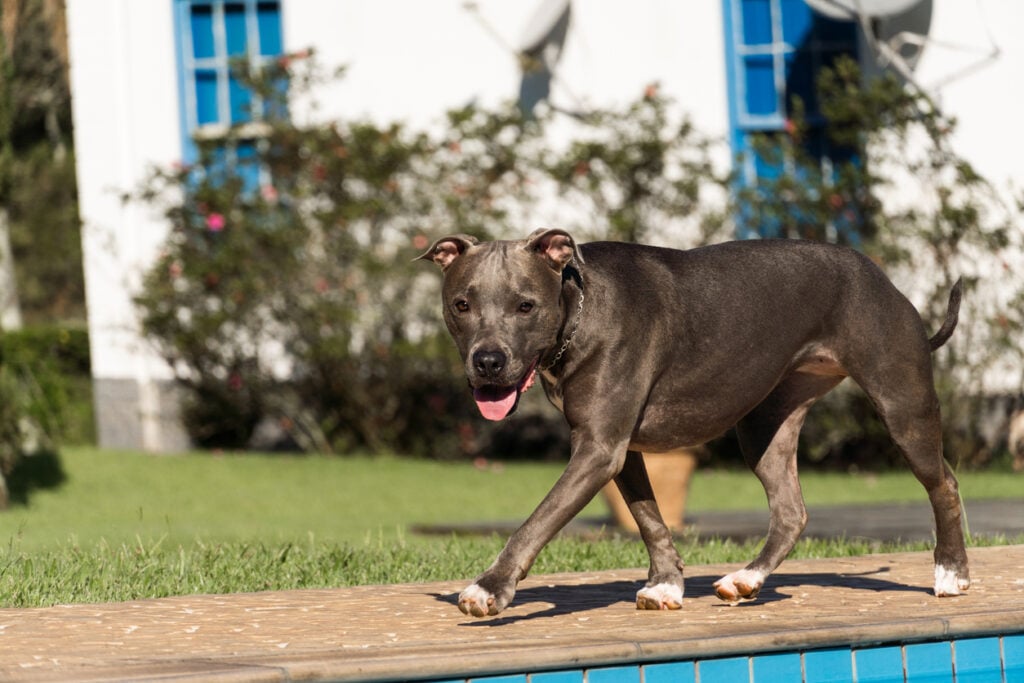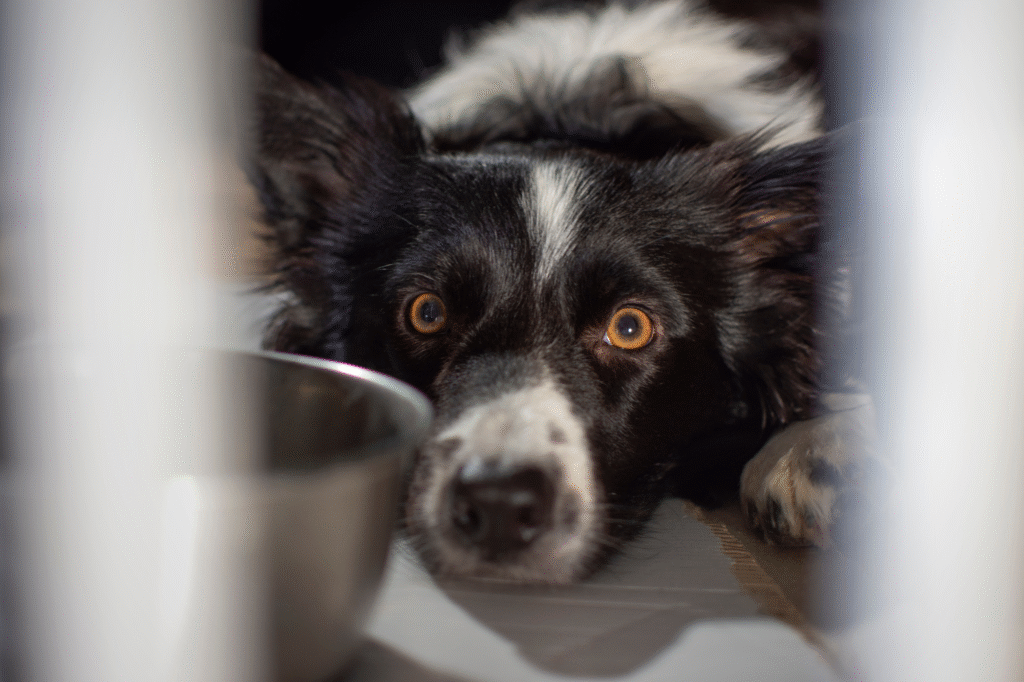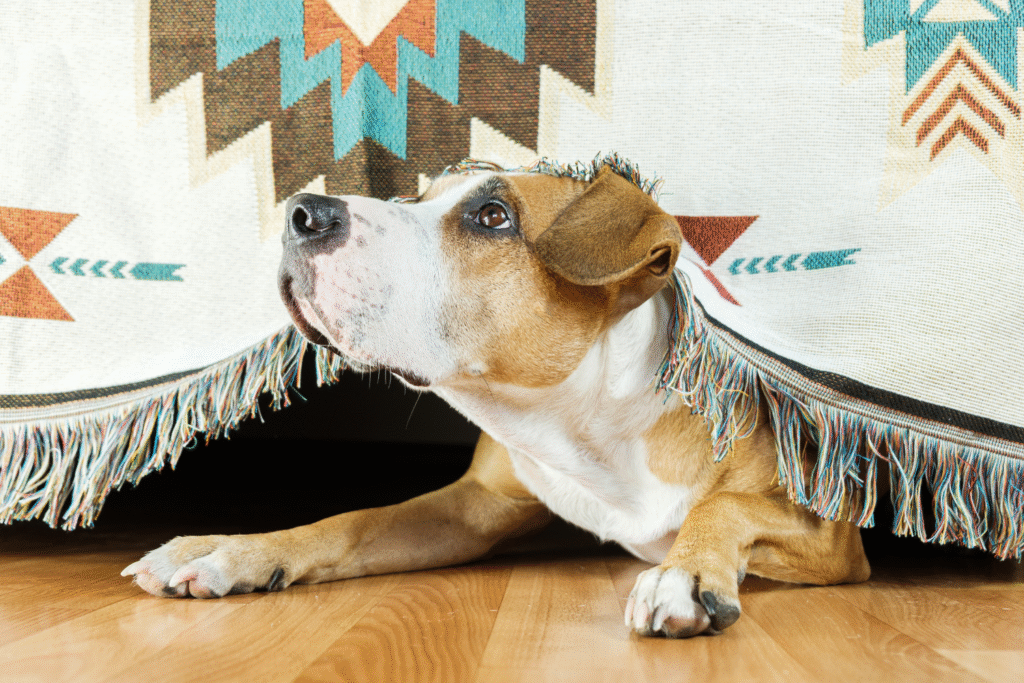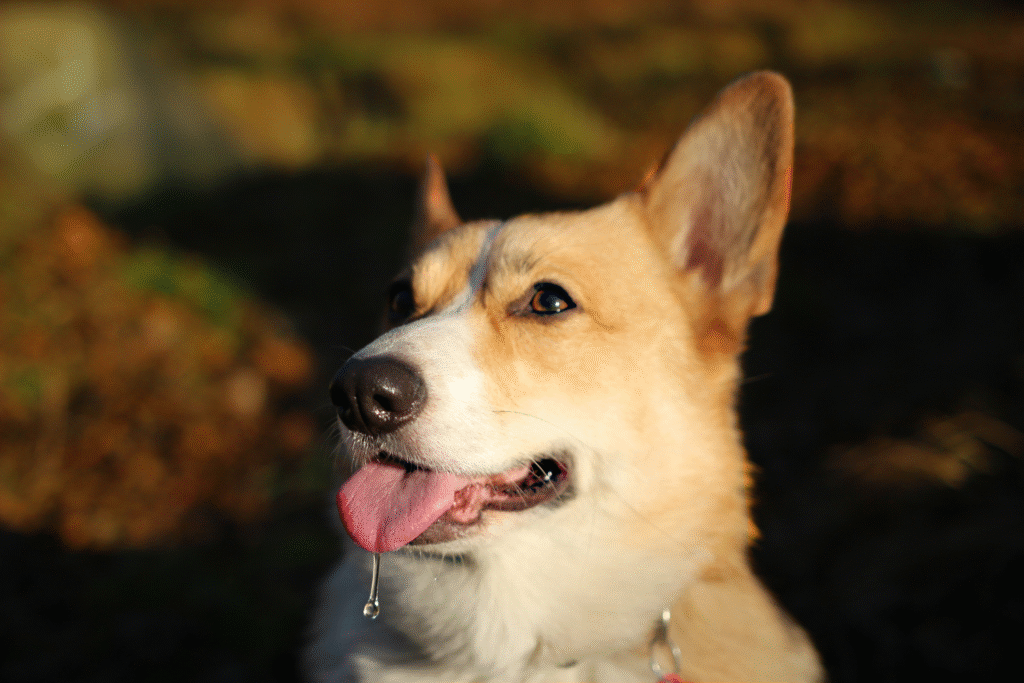Dogs often hide stress in plain sight.

Anxiety in dogs isn’t always about trembling in a corner or barking nonstop. It can show up in ways that look subtle or even quirky at first glance. Researchers have been piecing together how dogs express stress, and what they’ve found is that behavior and body language carry far more clues than people usually notice. Recognizing those signals early can mean the difference between a dog quietly struggling and one that gets the right support. With science catching up to what many owners already sense, the signs are becoming clearer, and they’re often written in everyday moments.
1. Restless pacing that refuses to settle down.

A dog who can’t seem to stop circling the room or shifting from one spot to another is often communicating more than just boredom. Anxiety creates a restless energy that keeps the body moving even when the dog is tired. Researchers studying canine behavior patterns have noted pacing as one of the hallmark signs of chronic stress, according to the American Kennel Club. What makes it especially telling is how it appears during quiet times, like evenings at home when a dog should be winding down. That mismatch between environment and behavior is where owners start to realize something deeper is driving the movement.
2. Excessive licking becomes a repetitive habit.

When licking shifts from an occasional self-grooming act into an endless routine, it signals the body is managing internal stress. Dogs may focus on paws, legs, or even the air itself. These repetitive actions are linked to anxiety as reported by Veterinary Clinics of North America, which found that compulsive licking can actually create skin wounds over time. What looks like a minor habit becomes self-destructive when it doesn’t stop, and it often appears when the dog is left alone or during stressful household changes. Owners who brush it off as quirky grooming can miss the silent message their dog is struggling.
3. Unexplained trembling appears even in safe spaces.

Shivering isn’t just for cold weather. Many anxious dogs tremble inside their own homes, even when nothing frightening is visible. The behavior stems from nervous system overdrive, where adrenaline keeps muscles shaking despite no obvious danger. In studies reviewed by the Journal of Veterinary Behavior, trembling is frequently observed in dogs with separation anxiety or fear-based triggers. It’s easy to dismiss as chilliness, but when the room is warm and the dog isn’t wet, the shaking points to anxiety. Those small, constant vibrations through their body become one of the clearer physical signals that emotional stress has taken root.
4. Barking escalates into something constant and draining.

A bark here or there is expected, but anxious barking has a very different rhythm. It becomes sharper, longer, and more repetitive, often carrying on long after the stimulus has passed. Neighbors sometimes hear it more than the owners themselves, especially during work hours when dogs are alone. Unlike territorial barking, this type doesn’t calm down with reassurance—it actually rises with human absence. That separation between normal vocalization and anxious barking is one of the clearest patterns families learn to recognize once they’re looking for it.
5. Clinginess feels more like panic than affection.

Every dog has moments of shadowing their owner, but anxiety can turn it into an unrelenting attachment. Dogs may glue themselves to one person, following room to room, pressing close, or whining if contact stops. It goes beyond normal bonding into a sense of desperation, where even bathroom doors become a source of distress. That intense dependency leaves dogs unable to self-soothe when left alone, creating a cycle of stress that keeps both pet and human trapped. This exaggerated attachment is one of the more emotional signals owners notice quickly, especially in otherwise independent dogs.
6. Destructive chewing targets furniture and household objects.

When stress builds, dogs often redirect it into their jaws. Anxiety-driven chewing looks different from playful destruction—it happens fast, with intensity, and often focuses on one object like a door frame or couch corner. The damage may occur only when the dog is alone, pointing to separation anxiety as the trigger. Beyond the frustration of ruined belongings, this behavior is the dog’s desperate attempt to release nervous energy. The aftermath speaks loudly when owners return home to splintered wood or shredded fabric, making it clear anxiety was driving the storm while no one was watching.
7. Accidents happen indoors despite house training.

A dog who suddenly starts urinating or defecating indoors after years of good behavior isn’t always being defiant. Anxiety disrupts normal bodily control, triggering accidents even when the dog knows it will upset their human. Stress hormones affect bladder and bowel muscles, making it difficult to hold on. These moments often happen during storms, fireworks, or when the dog is left alone. Owners may initially mistake it for regression or illness, but when paired with other signs of anxiety, the accidents reveal themselves as physical spillovers of stress rather than deliberate disobedience.
8. Ears and tail shift into unnatural positions.

The body tells stories long before the voice does. An anxious dog often pins its ears back tightly or tucks its tail under in situations that wouldn’t normally warrant fear. These shifts are brief yet noticeable, and they tend to happen in anticipation of something—like a doorbell or a loud truck passing outside. Body language like this reveals how the nervous system primes itself for imagined threats. Owners who watch closely learn that these subtle postures are not random but part of a broader anxious vocabulary that their dogs use to speak.
9. Sudden aggression appears without clear provocation.

Stress can push even gentle dogs into reactive moments. Anxious aggression often shows up in unexpected snaps, growls, or stiffened body language when the dog feels cornered or overstimulated. Unlike true dominance aggression, this type comes from fear, where the dog lashes out defensively rather than offensively. A crowded party, a trip to the vet, or even unfamiliar sounds can tip the balance. The aggression itself may be fleeting, but the tension underlying it lingers, creating an unpredictable environment for both the dog and those around them.
10. Whining turns into a constant background noise.

It’s easy to brush off whining as attention-seeking, but anxiety-driven vocalizations have a tone of unease. The sound is higher, more persistent, and often paired with pacing or shaking. It tends to spike during times of separation or when routines are disrupted. Families who once found the noise endearing often start to realize it carries a weight of distress. That change in perception shifts whining from something to ignore into something worth listening to carefully, because it signals the dog’s inability to cope quietly anymore.
11. Shallow panting shows up without heat or exercise.

Panting after a run makes sense, but panting while sitting on the couch is a different story. Anxiety activates a dog’s sympathetic nervous system, mimicking the effects of exertion. Their chest rises and falls quickly, with the tongue lolling despite no physical effort. It can even happen in cool rooms or late at night when heat isn’t a factor. Observant owners who connect panting to stress start to notice it overlaps with other anxious behaviors, reinforcing the idea that physical signs can’t be taken at face value.
12. Digging becomes an escape strategy inside the home.

Scratched carpets, shredded bedding, and clawed doors all point to anxiety-fueled digging. This behavior isn’t about nesting—it’s an attempt to escape or release pent-up panic. Dogs may target doorways when left alone, as though they’re trying to tunnel through to find their person. Some even dig at couches or rugs when storms roll in, scratching frantically to cope with the noise. The act itself is exhausting, but the drive behind it shows how deeply anxiety can consume a dog’s sense of safety, leaving traces in the home that feel impossible to miss.
13. Appetite disappears despite the usual excitement for meals.

Few signals worry owners more than a dog refusing food. Anxiety can override the normal joy of mealtime, shutting down appetite altogether. This isn’t about picky eating—it’s a stress response that changes digestive hormone levels and dulls hunger cues. Owners may see their dog sniff a bowl, take a half-hearted bite, and then walk away. Over time, the skipped meals begin to show in weight loss and low energy. A missing appetite, especially in a dog that usually races to eat, often reveals the heavy toll anxiety is taking beneath the surface.
